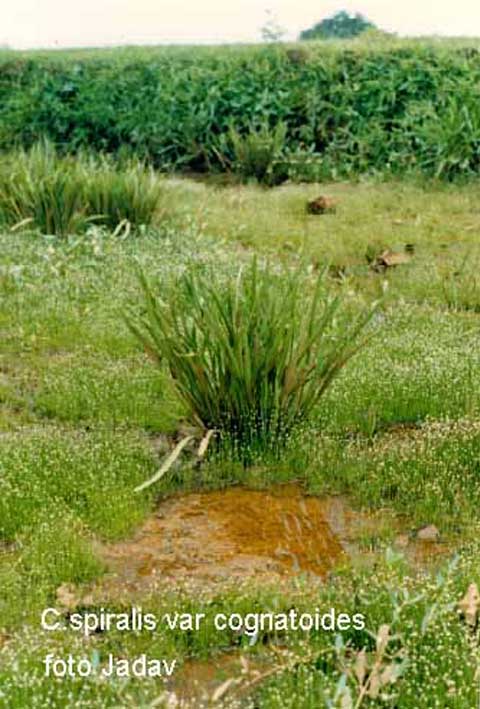 |
An open, marshy area with big stands of C.
spiralis var. cognatoides.
photo Yadav |
|
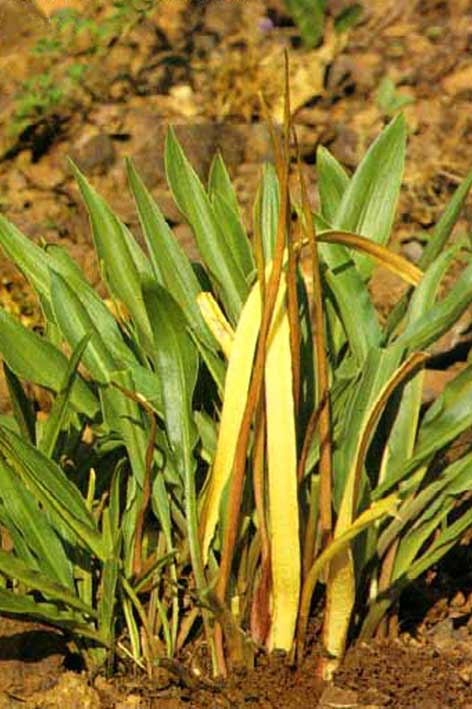 |
In the wild, the spathe is as long as the leaves.
photo Yadav
|
|
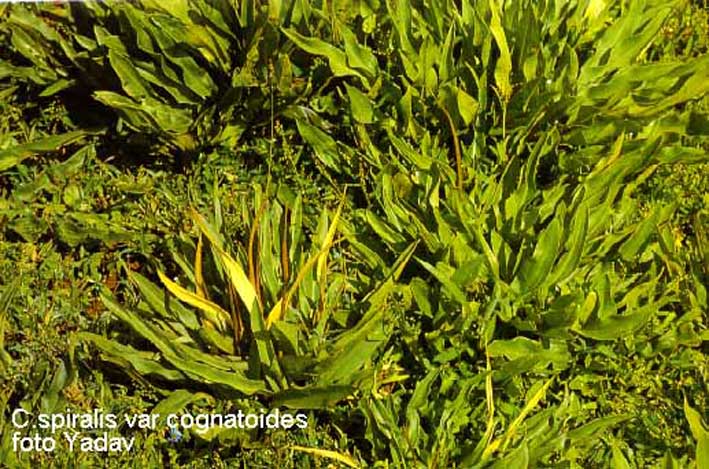 |
The limb of the spathe is almost smooth, in contrast to var. spiralis.
photo Yadav |
|
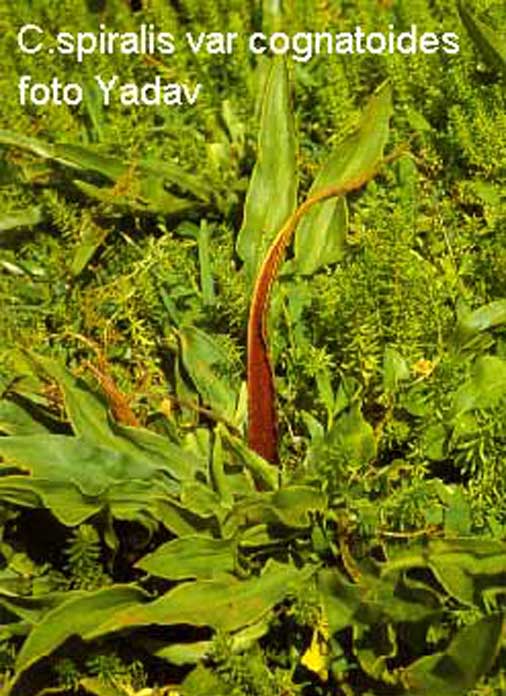 |
A red limb of the spathe.
photo Yadav
|
|
| |
|
|
|
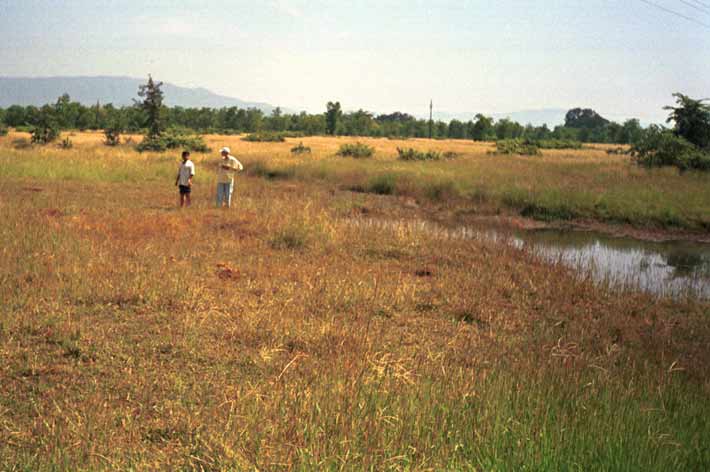 |
Open area where Mariska te Beest found C.
spiralis var. cognatoides.
photo te Beest
|
|
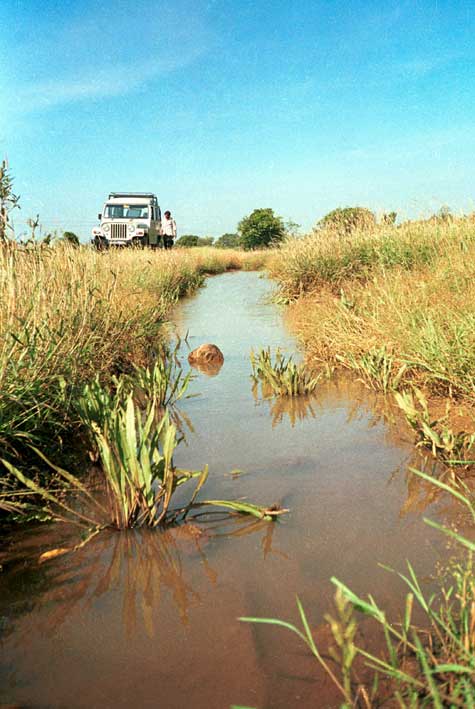 |
Big plants growing in a ditch.
photo te Beest
|
|
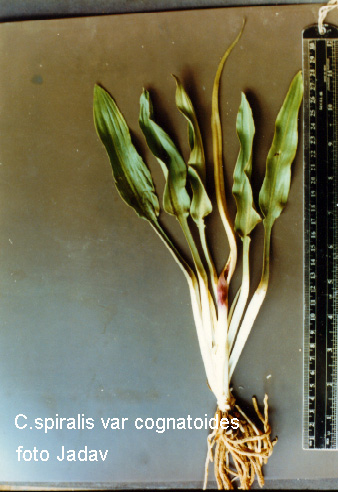 |
C.
spiralis var. cognatoides grows deeply buried in the soil (the white parts of the petiole). Note the strong contractile roots.
photo Yadav
|
|
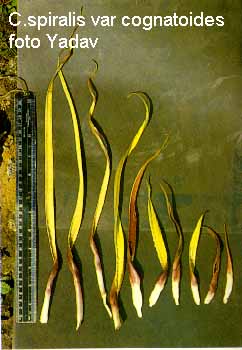 |
Variation in colour and size of the limb. The smallest ones cannot be distinguished from var. spiralis.
photo Yadav
|
|
| |
|
|
|
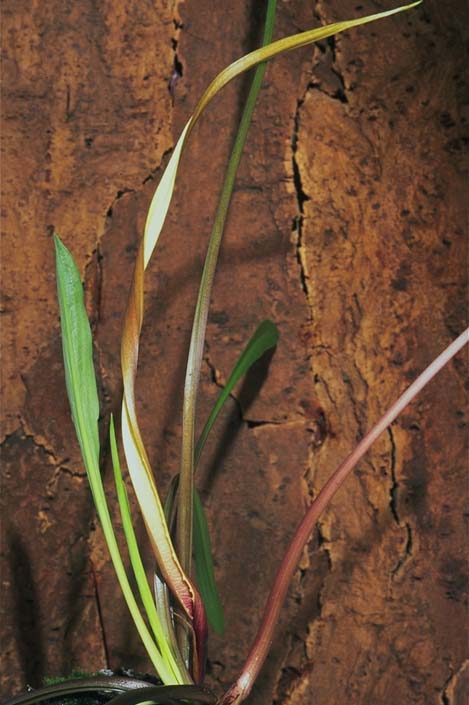 |
C.
spiralis var. cognatoides grows easy and flowers frequent in cultivation. A dormant phase is never obeserved. The spathe easily reach a length of ca 30 cm.
coll. Yadav 327, cult. B669
|
|
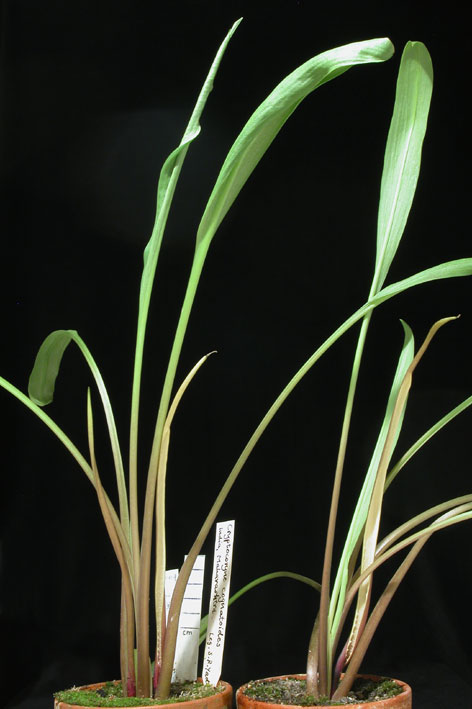 |
The plant does not make runners. After a 15 year period in cultivation, it was only recently that the rhizome thrived two new plants. By that reason it is one of the most rare Cryptocoryne in cultivation.
coll. Yadav 327, cult. B669
|
|
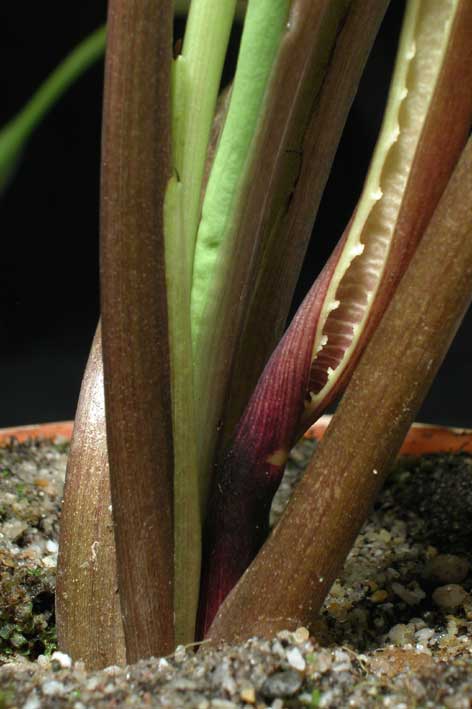 |
The spathe with the typical denticulation along the margin is with it kettle 2 - 3 cm deep in the ground.
|
|
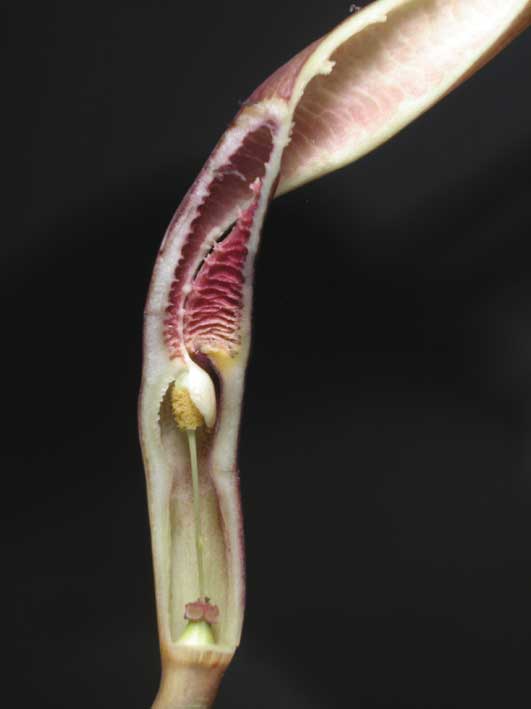 |
The lower part of the limb has transverse ridges inside, mostly reddish. Note the very long spadix and the constriction in the upper part of the kettle.
coll. Yadav 327, cult. B669
|
|
| |
|
|
|
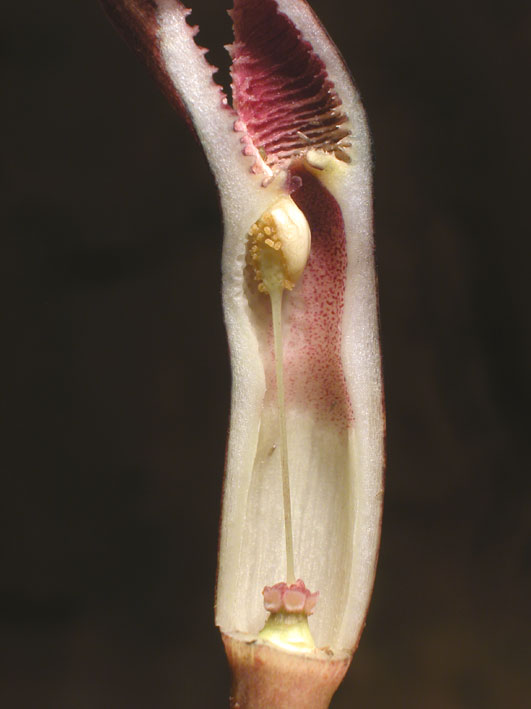 |
Note the
typical septum, a transverse wall with a hole between the kettle and the limb. Apparently there is no tube, as usual in Cryptocoryne.
coll. Yadav 327, cult. B669
|
|
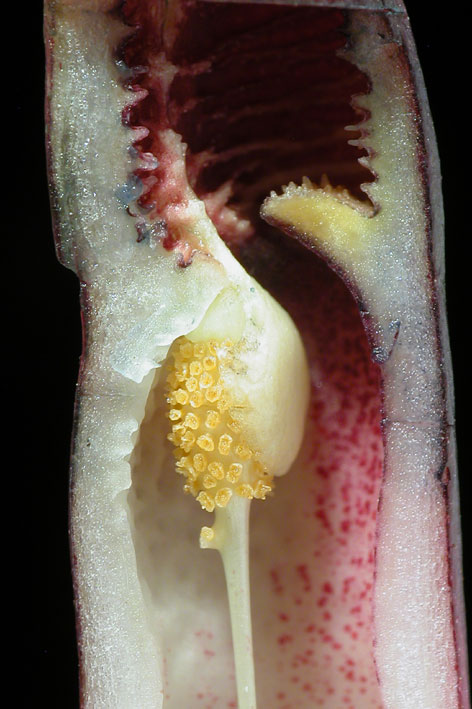 |
The kettle may be a bit reddish inside.
coll. Yadav 327, cult. B669
|
|
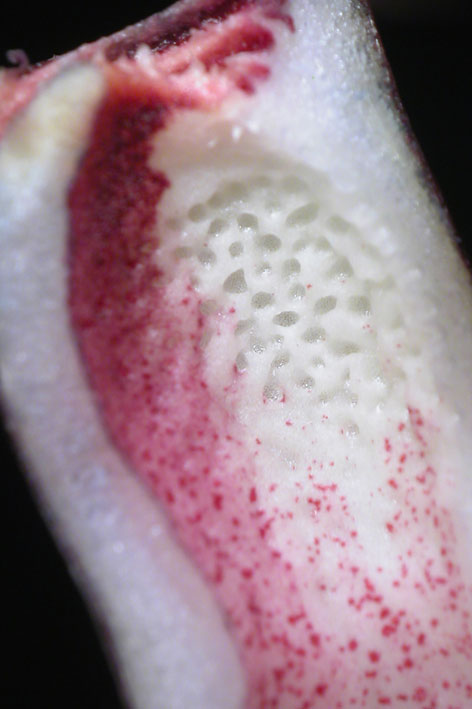 |
When the male flowers are removed, one can clearly see the alveoli in the wall of the kettle.
coll. Yadav 327, cult. B669
|
|
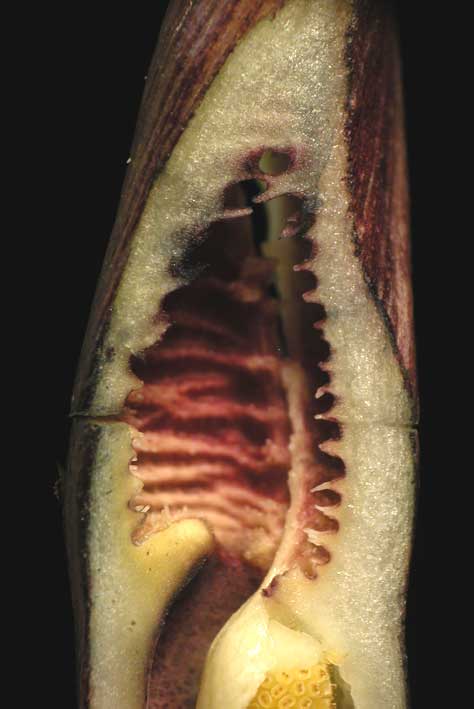 |
There is no favour for a left of right handed twist. Even for the same plant (as usual in Cryptocoryne).
coll. Yadav 327, cult. B669
|
|
| |
|
|
|
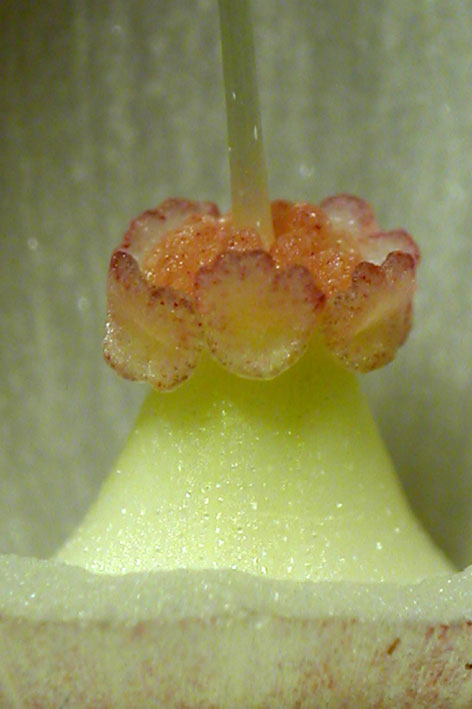 |
The female flowers at the bottom of the kettle have more or less lobed stigmas.
coll. Yadav 327, cult. B669
|
|
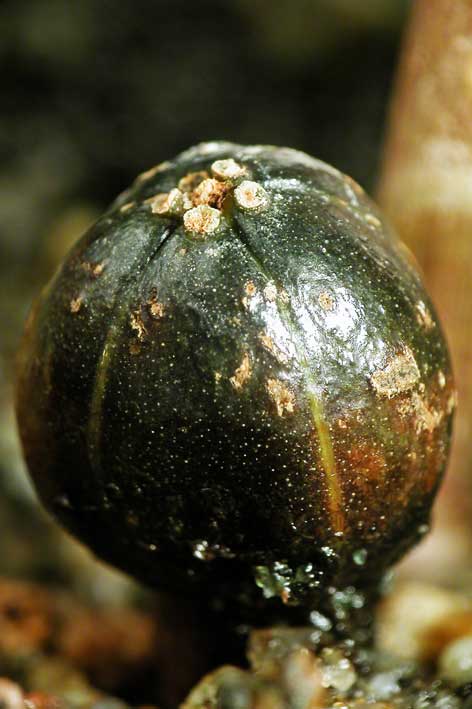 |
The fruit is almost a perfect sfere. At ripening the peduncle elongates and brings the fruit above the surface. Artificial pollination.
coll. Yadav 327, cult. B669
|
|
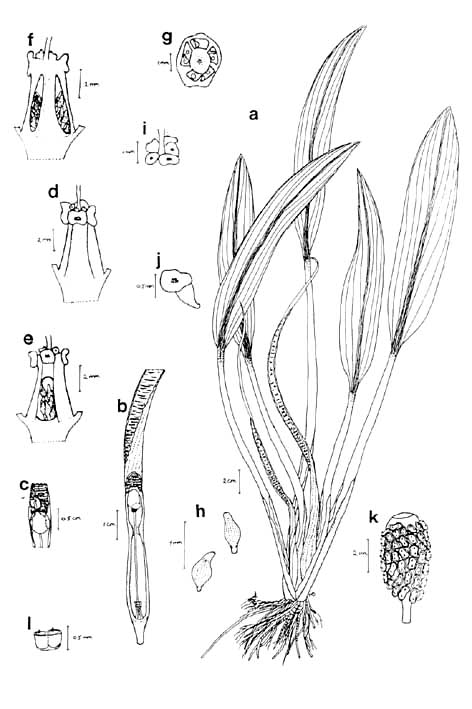 |
Drawing of C. spiralis var. cognatoides in Te Beest (1998)
drawing te Beest
|
|
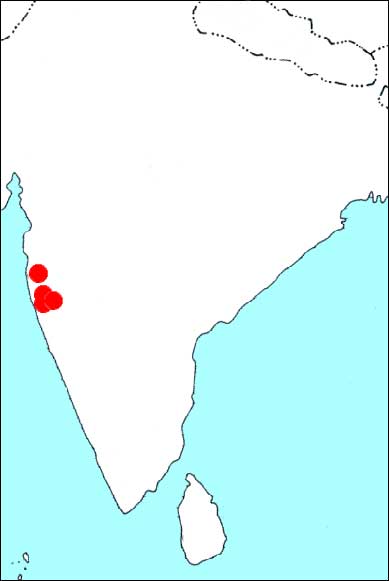 |
Distribution of C. spiralis var.
cognatoides. |
|
| |
|
|
|
For more comments and literature, see the page of the spiralis-group
Updated December 2013 |
|